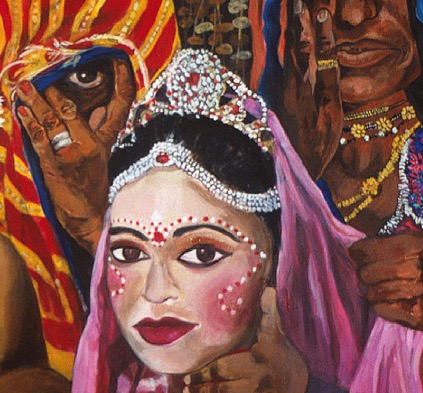
The Crisis Facing Indian Men
Indian men are in crisis. In many ways this is a crisis of identity and culture – Indian men don’t know how to deal with Indian women any more. The most visible manifestation of this crisis is the impact it is having on Indian women.
The banning of India’s Daughter by India’s government perfectly illustrates this crisis. Home Minister Rajnath Singh justified his decision since, ‘it depicts the comments of the convict which are highly derogatory and are an affront to the dignity of women’.
But did Singh think it was derogatory when the BJP’s Babulal Gaur said rape is ‘sometimes right’? What about when the BJP’s Kailash Vijayvargiya said ‘such cases [of rape] will happen’ if women cross the ‘limits’? And when the BJP’s Ritu Tawade blamed rapes on lingerie mannequins?
These statements aren’t that different from those of Mukesh Singh, one of the Delhi gang-rapists, who said, ‘A girl is far more responsible for the rape than a boy.’ And yet the BJP didn’t ban or reprimand its own members for these statements.
But there was something else in Singh’s statement that revealed far more – the idea that women have to be shielded from comments that are an affront to their dignity. In fact, many Indian women said the opposite on social media: they wanted those comments exposed to show the attitudes they face.
This incident pinpoints the crisis. Indian society has convinced itself that women are put on a pedestal and that they are worshipped. Hence, any suggestion that women are treated badly is instantly rejected by many, even the well-intentioned, because they cannot see how a society puts women on a pedestal yet treats them so badly.
But this is precisely the problem. By putting women on a pedestal, Indian society effectively holds women to impossible standards. By claiming that women are worshipped, the implication is that women who fall from the pedestal don’t deserve worship and are fair game for assault or worse.
To add to this – a growing crisis of identity that has its roots in the economic liberalisation of the 1990s which not only brought to India a consumerism-charged boost of western culture, but also gave Indian women an unprecedented opportunity to work. As cities became more socially liberal and women economically independent, a culture-clash resulted – men had to come to terms with independent women who didn’t fit into roles defined for them by others.
Men who were unable to handle independent women labelled these women as bad. They were no longer on a pedestal. In the minds of these men, those women then become fair game for assault or rape. Women are then blamed for ‘provoking’ that violence, with the implication that if they had remained pure and meek then this would never have happened. When people say ‘its her fault for wearing short skirts’or that ‘women are becoming too westernised’ – it is an attempt to blame them for the violence they face. The insinuation is that women who face rape or harassment have brought it upon themselves because of their behaviour.
It’s obvious why this mentality is wrong, because conservatively dressed women (from those clad in burqas to those in shalwar-kameez) and girls who haven’t yet reached puberty are also raped in large numbers. In fact, the vast majority of rape happens behind closed doors to women who know the men assaulting them. These aren’t strangers enticed by their clothing – these are men who know their victim and are abusing them because they have the power to do so. How women are dressed or behave is irrelevant to the likelihood of them being assaulted.
But there is another, pressing dimension to sexual and gender violence. While, on one hand, women may be becoming more economically independant and entering the workforce, India faces an unprecedented, and increasing, shortage of women.
The Census of 2011 found that there were 37 million fewer women than men in India. Most countries have more women than men since they generally live longer than men.
So what if we tried to imagine India having a more normal ratio of men to women? Then we would have to add approximately 23 million more women to the population. In other words, if India had a more natural gender ratio then there would be 60 million more women in India. But they have gone ‘missing’.
How have 60 million women gone missing from the Indian census? A proportion of that is down to foetuses or infants being killed just because they are girls. A large proportion is down to young girls dying due to neglect, malnutrition or disease, in part due to the perpetuation of institutions such as dowry. In fact, India has the highest difference between the proportion of infant boys and girls who die from malnutrition in the world.
It was in the 1980s that this crisis really blew up, thanks to technology. It became much cheaper and easier for parents to know the sex of the foetus before it was born and abort it if it was a girl. Even though the practice was made illegal, doctors collude with parents in this act to this day.
And it’s getting worse. The ratio of girls to boys under the age of 6 has consistently fallen in India since 1951, from 983 to an unprecedented 917 girls per 1000 boys by 2011. That in itself creates problems as men find it difficult to find brides and some end up resorting to violence, trafficking or suicide.
What’s happening in India isn’t normal by any stretch of the imagination. The country is projected to have the world’s largest population by 2030, and may have 100 million missing women by then. There is a word for that: genocide.
